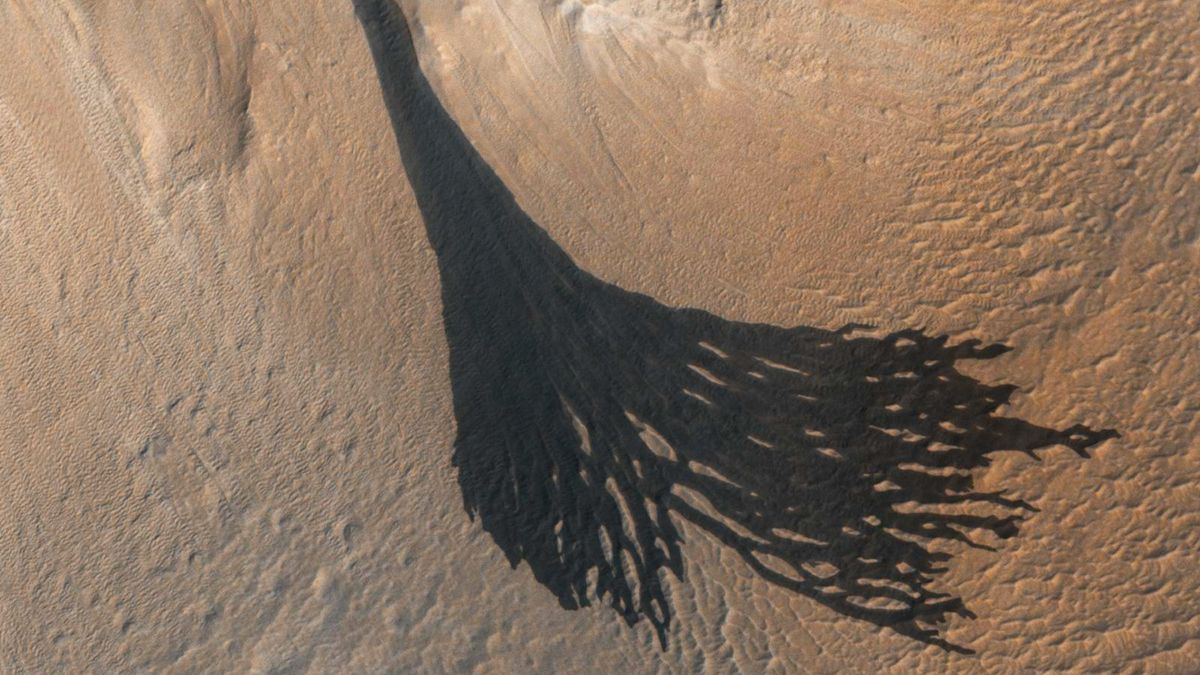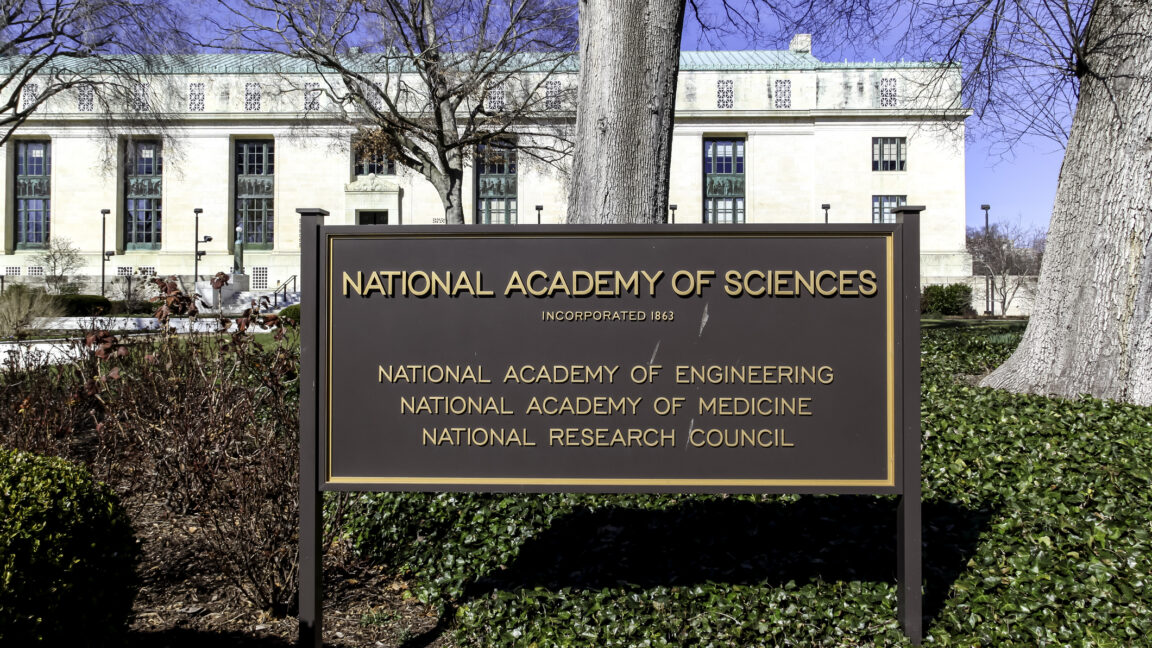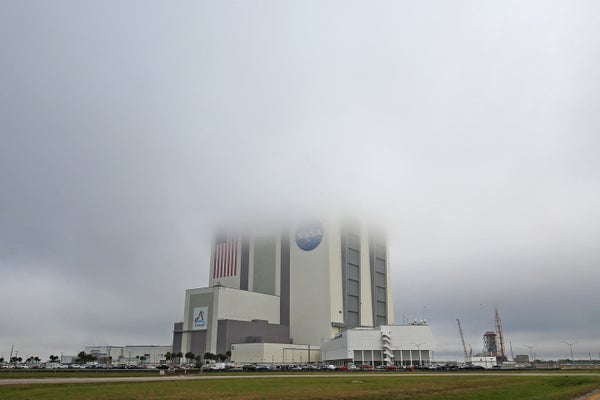US science is being wrecked, and its leadership is fighting the last war
Missing the big picture
US science is being wrecked, and its leadership is fighting the last war
Facing an extreme budget, the National Academies hosted an event that ignored it.
John Timmer
–
Jun 4, 2025 6:00 pm
|
16
Credit:
JHVE Photo
Credit:
JHVE Photo
Story text
Size
Small
Standard
Large
Width
*
Standard
Wide
Links
Standard
Orange
* Subscribers only
Learn more
WASHINGTON, DC—The general outline of the Trump administration's proposed 2026 budget was released a few weeks back, and it included massive cuts for most agencies, including every one that funds scientific research. Late last week, those agencies began releasing details of what the cuts would mean for the actual projects and people they support. And the results are as bad as the initial budget had suggested: one-of-a-kind scientific experiment facilities and hardware retired, massive cuts in supported scientists, and entire areas of research halted.
And this comes in an environment where previously funded grants are being terminated, funding is being held up for ideological screening, and universities have been subject to arbitrary funding freezes. Collectively, things are heading for damage to US science that will take decades to recover from. It's a radical break from the trajectory science had been on.
That's the environment that the US's National Academies of Science found itself in yesterday while hosting the State of the Science event in Washington, DC. It was an obvious opportunity for the nation's leading scientific organization to warn the nation of the consequences of the path that the current administration has been traveling. Instead, the event largely ignored the present to worry about a future that may never exist.
The proposed cuts
The top-line budget numbers proposed earlier indicated things would be bad: nearly 40 percent taken off the National Institutes of Health's budget, the National Science Foundation down by over half. But now, many of the details of what those cuts mean are becoming apparent.
NASA's budget includes sharp cuts for planetary science, which would be cut in half and then stay flat for the rest of the decade, with the Mars Sample Return mission canceled. All other science budgets, including Earth Science and Astrophysics, take similar hits; one astronomer posted a graphic showing how many present and future missions that would mean. Active missions that have returned unprecedented data, like Juno and New Horizons, would go, as would two Mars orbiters. As described by Science magazine's news team, "The plans would also kill off nearly every major science mission the agency has not yet begun to build."
A chart prepared by astronomer Laura Lopez showing just how many astrophysics missions will be cancelled.
Credit:
Laura Lopez
The National Science Foundation, which funds much of the US's fundamental research, is also set for brutal cuts. Biology, engineering, and education will all be slashed by over 70 percent; computer science, math and physical science, and social and behavioral science will all see cuts of over 60 percent. International programs will take an 80 percent cut. The funding rate of grant proposals is expected to drop from 26 percent to just 7 percent, meaning the vast majority of grants submitted to the NSF will be a waste of time. The number of people involved in NSF-funded activities will drop from over 300,000 to just 90,000. Almost every program to broaden participation in science will be eliminated.
As for specifics, they're equally grim. The fleet of research ships will essentially become someone else's problem: "The FY 2026 Budget Request will enable partial support of some ships." We've been able to better pin down the nature and location of gravitational wave events as detectors in Japan and Italy joined the original two LIGO detectors; the NSF will reverse that progress by shutting one of the LIGOs. The NSF's contributions to detectors at the Large Hadron Collider will be cut by over half, and one of the two very large telescopes it was helping fund will be cancelled. "Access to the telescopes at Kitt Peak and Cerro Tololo will be phased out," and the NSF will transfer the facilities to other organizations.
The Department of Health and Human Services has been less detailed about the specific cuts its divisions will see, largely focusing on the overall numbers, which are down considerably. The NIH, which is facing a cut of over 40 percent, will be reorganized, with its 19 institutes pared down to just eight. This will result in some odd pairings, such as the dental and eye institutes ending up in the same place; genomics and biomedical imaging will likewise end up under the same roof. Other groups like the Centers for Disease Control and Prevention and the Food and Drug Administration will also face major cuts.
Issues go well beyond the core science agencies, as well. In the Department of Energy, funding for wind, solar, and renewable grid integration has been zeroed out, essentially ending all programs in this area. Hydrogen and fuel cells face a similar fate. Collectively, these had gotten over billion dollars in 2024's budget. Other areas of science at the DOE, such as high-energy physics, fusion, and biology, receive relatively minor cuts that are largely in line with the ones faced by administration priorities like fossil and nuclear energy.
Will this happen?
It goes without saying that this would amount to an abandonment of US scientific leadership at a time when most estimates of China's research spending show it approaching US-like levels of support. Not only would it eliminate many key facilities, instruments, and institutions that have helped make the US a scientific powerhouse, but it would also block the development of newer and additional ones. The harms are so widespread that even topics that the administration claims are priorities would see severe cuts.
And the damage is likely to last for generations, as support is cut at every stage of the educational pipeline that prepares people for STEM careers. This includes careers in high-tech industries, which may require relocation overseas due to a combination of staffing concerns and heightened immigration controls.
That said, we've been here before in the first Trump administration, when budgets were proposed with potentially catastrophic implications for US science. But Congress limited the damage and maintained reasonably consistent budgets for most agencies.
Can we expect that to happen again? So far, the signs are not especially promising. The House has largely adopted the Trump administration's budget priorities, despite the fact that the budget they pass turns its back on decades of supposed concerns about deficit spending. While the Senate has yet to take up the budget, it has also been very pliant during the second Trump administration, approving grossly unqualified cabinet picks such as Robert F. Kennedy Jr.
All of which would seem to call for the leadership of US science organizations to press the case for the importance of science funding to the US, and highlight the damage that these cuts would cause. But, if yesterday's National Academies event is anything to judge by, the leadership is not especially interested.
Altered states
As the nation's premier science organization, and one that performs lots of analyses for the government, the National Academies would seem to be in a position to have its concerns taken seriously by members of Congress. And, given that the present and future of science in the US is being set by policy choices, a meeting entitled the State of the Science would seem like the obvious place to address those concerns.
If so, it was not obvious to Marcia McNutt, the president of the NAS, who gave the presentation. She made some oblique references to current problems, saying, that “We are embarking on a radical new experiment in what conditions promote science leadership, with the US being the treatment group, and China as the control," and acknowledged that "uncertainties over the science budgets for next year, coupled with cancellations of billions of dollars of already hard-won research grants, is causing an exodus of researchers."
But her primary focus was on the trends that have been operative in science funding and policy leading up to but excluding the second Trump administration. McNutt suggested this was needed to look beyond the next four years. However, that ignores the obvious fact that US science will be fundamentally different if the Trump administration can follow through on its plans and policies; the trends that have been present for the last two decades will be irrelevant.
She was also remarkably selective about her avoidance of discussing Trump administration priorities. After noting that faculty surveys have suggested they spend roughly 40 percent of their time handling regulatory requirements, she twice mentioned that the administration's anti-regulatory stance could be a net positive here. Yet she neglected to note that many of the abandoned regulations represent a retreat from science-driven policy.
McNutt also acknowledged the problem of science losing the bipartisan support it has enjoyed, as trust in scientists among US conservatives has been on a downward trend. But she suggested it was scientists' responsibility to fix the problem, even though it's largely the product of one party deciding it can gain partisan advantage by raising doubts about scientific findings in fields like climate change and vaccine safety.
The panel discussion that came after largely followed McNutt's lead in avoiding any mention of the current threats to science. The lone exception was Heather Wilson, president of the University of Texas at El Paso and a former Republican member of the House of Representatives and Secretary of the Air Force during the first Trump administration. Wilson took direct aim at Trump's cuts to funding for underrepresented groups, arguing, "Talent is evenly distributed, but opportunity is not." After arguing that "the moral authority of science depends on the pursuit of truth," she highlighted the cancellation of grants that had been used to study diseases that are more prevalent in some ethnic groups, saying "that's not woke science—that's genetics."
Wilson was clearly the exception, however, as the rest of the panel largely avoided direct mention of either the damage already done to US science funding or the impending catastrophe on the horizon. We've asked the National Academies' leadership a number of questions about how it perceives its role at a time when US science is clearly under threat. As of this article's publication, however, we have not received a response.
At yesterday's event, however, only one person showed a clear sense of what they thought that role should be—Wilson again, whose strongest words were directed at the National Academies themselves, which she said should "do what you've done since Lincoln was president," and stand up for the truth.
John Timmer
Senior Science Editor
John Timmer
Senior Science Editor
John is Ars Technica's science editor. He has a Bachelor of Arts in Biochemistry from Columbia University, and a Ph.D. in Molecular and Cell Biology from the University of California, Berkeley. When physically separated from his keyboard, he tends to seek out a bicycle, or a scenic location for communing with his hiking boots.
16 Comments
#science #being #wrecked #its #leadershipUS science is being wrecked, and its leadership is fighting the last war
Missing the big picture
US science is being wrecked, and its leadership is fighting the last war
Facing an extreme budget, the National Academies hosted an event that ignored it.
John Timmer
–
Jun 4, 2025 6:00 pm
|
16
Credit:
JHVE Photo
Credit:
JHVE Photo
Story text
Size
Small
Standard
Large
Width
*
Standard
Wide
Links
Standard
Orange
* Subscribers only
Learn more
WASHINGTON, DC—The general outline of the Trump administration's proposed 2026 budget was released a few weeks back, and it included massive cuts for most agencies, including every one that funds scientific research. Late last week, those agencies began releasing details of what the cuts would mean for the actual projects and people they support. And the results are as bad as the initial budget had suggested: one-of-a-kind scientific experiment facilities and hardware retired, massive cuts in supported scientists, and entire areas of research halted.
And this comes in an environment where previously funded grants are being terminated, funding is being held up for ideological screening, and universities have been subject to arbitrary funding freezes. Collectively, things are heading for damage to US science that will take decades to recover from. It's a radical break from the trajectory science had been on.
That's the environment that the US's National Academies of Science found itself in yesterday while hosting the State of the Science event in Washington, DC. It was an obvious opportunity for the nation's leading scientific organization to warn the nation of the consequences of the path that the current administration has been traveling. Instead, the event largely ignored the present to worry about a future that may never exist.
The proposed cuts
The top-line budget numbers proposed earlier indicated things would be bad: nearly 40 percent taken off the National Institutes of Health's budget, the National Science Foundation down by over half. But now, many of the details of what those cuts mean are becoming apparent.
NASA's budget includes sharp cuts for planetary science, which would be cut in half and then stay flat for the rest of the decade, with the Mars Sample Return mission canceled. All other science budgets, including Earth Science and Astrophysics, take similar hits; one astronomer posted a graphic showing how many present and future missions that would mean. Active missions that have returned unprecedented data, like Juno and New Horizons, would go, as would two Mars orbiters. As described by Science magazine's news team, "The plans would also kill off nearly every major science mission the agency has not yet begun to build."
A chart prepared by astronomer Laura Lopez showing just how many astrophysics missions will be cancelled.
Credit:
Laura Lopez
The National Science Foundation, which funds much of the US's fundamental research, is also set for brutal cuts. Biology, engineering, and education will all be slashed by over 70 percent; computer science, math and physical science, and social and behavioral science will all see cuts of over 60 percent. International programs will take an 80 percent cut. The funding rate of grant proposals is expected to drop from 26 percent to just 7 percent, meaning the vast majority of grants submitted to the NSF will be a waste of time. The number of people involved in NSF-funded activities will drop from over 300,000 to just 90,000. Almost every program to broaden participation in science will be eliminated.
As for specifics, they're equally grim. The fleet of research ships will essentially become someone else's problem: "The FY 2026 Budget Request will enable partial support of some ships." We've been able to better pin down the nature and location of gravitational wave events as detectors in Japan and Italy joined the original two LIGO detectors; the NSF will reverse that progress by shutting one of the LIGOs. The NSF's contributions to detectors at the Large Hadron Collider will be cut by over half, and one of the two very large telescopes it was helping fund will be cancelled. "Access to the telescopes at Kitt Peak and Cerro Tololo will be phased out," and the NSF will transfer the facilities to other organizations.
The Department of Health and Human Services has been less detailed about the specific cuts its divisions will see, largely focusing on the overall numbers, which are down considerably. The NIH, which is facing a cut of over 40 percent, will be reorganized, with its 19 institutes pared down to just eight. This will result in some odd pairings, such as the dental and eye institutes ending up in the same place; genomics and biomedical imaging will likewise end up under the same roof. Other groups like the Centers for Disease Control and Prevention and the Food and Drug Administration will also face major cuts.
Issues go well beyond the core science agencies, as well. In the Department of Energy, funding for wind, solar, and renewable grid integration has been zeroed out, essentially ending all programs in this area. Hydrogen and fuel cells face a similar fate. Collectively, these had gotten over billion dollars in 2024's budget. Other areas of science at the DOE, such as high-energy physics, fusion, and biology, receive relatively minor cuts that are largely in line with the ones faced by administration priorities like fossil and nuclear energy.
Will this happen?
It goes without saying that this would amount to an abandonment of US scientific leadership at a time when most estimates of China's research spending show it approaching US-like levels of support. Not only would it eliminate many key facilities, instruments, and institutions that have helped make the US a scientific powerhouse, but it would also block the development of newer and additional ones. The harms are so widespread that even topics that the administration claims are priorities would see severe cuts.
And the damage is likely to last for generations, as support is cut at every stage of the educational pipeline that prepares people for STEM careers. This includes careers in high-tech industries, which may require relocation overseas due to a combination of staffing concerns and heightened immigration controls.
That said, we've been here before in the first Trump administration, when budgets were proposed with potentially catastrophic implications for US science. But Congress limited the damage and maintained reasonably consistent budgets for most agencies.
Can we expect that to happen again? So far, the signs are not especially promising. The House has largely adopted the Trump administration's budget priorities, despite the fact that the budget they pass turns its back on decades of supposed concerns about deficit spending. While the Senate has yet to take up the budget, it has also been very pliant during the second Trump administration, approving grossly unqualified cabinet picks such as Robert F. Kennedy Jr.
All of which would seem to call for the leadership of US science organizations to press the case for the importance of science funding to the US, and highlight the damage that these cuts would cause. But, if yesterday's National Academies event is anything to judge by, the leadership is not especially interested.
Altered states
As the nation's premier science organization, and one that performs lots of analyses for the government, the National Academies would seem to be in a position to have its concerns taken seriously by members of Congress. And, given that the present and future of science in the US is being set by policy choices, a meeting entitled the State of the Science would seem like the obvious place to address those concerns.
If so, it was not obvious to Marcia McNutt, the president of the NAS, who gave the presentation. She made some oblique references to current problems, saying, that “We are embarking on a radical new experiment in what conditions promote science leadership, with the US being the treatment group, and China as the control," and acknowledged that "uncertainties over the science budgets for next year, coupled with cancellations of billions of dollars of already hard-won research grants, is causing an exodus of researchers."
But her primary focus was on the trends that have been operative in science funding and policy leading up to but excluding the second Trump administration. McNutt suggested this was needed to look beyond the next four years. However, that ignores the obvious fact that US science will be fundamentally different if the Trump administration can follow through on its plans and policies; the trends that have been present for the last two decades will be irrelevant.
She was also remarkably selective about her avoidance of discussing Trump administration priorities. After noting that faculty surveys have suggested they spend roughly 40 percent of their time handling regulatory requirements, she twice mentioned that the administration's anti-regulatory stance could be a net positive here. Yet she neglected to note that many of the abandoned regulations represent a retreat from science-driven policy.
McNutt also acknowledged the problem of science losing the bipartisan support it has enjoyed, as trust in scientists among US conservatives has been on a downward trend. But she suggested it was scientists' responsibility to fix the problem, even though it's largely the product of one party deciding it can gain partisan advantage by raising doubts about scientific findings in fields like climate change and vaccine safety.
The panel discussion that came after largely followed McNutt's lead in avoiding any mention of the current threats to science. The lone exception was Heather Wilson, president of the University of Texas at El Paso and a former Republican member of the House of Representatives and Secretary of the Air Force during the first Trump administration. Wilson took direct aim at Trump's cuts to funding for underrepresented groups, arguing, "Talent is evenly distributed, but opportunity is not." After arguing that "the moral authority of science depends on the pursuit of truth," she highlighted the cancellation of grants that had been used to study diseases that are more prevalent in some ethnic groups, saying "that's not woke science—that's genetics."
Wilson was clearly the exception, however, as the rest of the panel largely avoided direct mention of either the damage already done to US science funding or the impending catastrophe on the horizon. We've asked the National Academies' leadership a number of questions about how it perceives its role at a time when US science is clearly under threat. As of this article's publication, however, we have not received a response.
At yesterday's event, however, only one person showed a clear sense of what they thought that role should be—Wilson again, whose strongest words were directed at the National Academies themselves, which she said should "do what you've done since Lincoln was president," and stand up for the truth.
John Timmer
Senior Science Editor
John Timmer
Senior Science Editor
John is Ars Technica's science editor. He has a Bachelor of Arts in Biochemistry from Columbia University, and a Ph.D. in Molecular and Cell Biology from the University of California, Berkeley. When physically separated from his keyboard, he tends to seek out a bicycle, or a scenic location for communing with his hiking boots.
16 Comments
#science #being #wrecked #its #leadership















